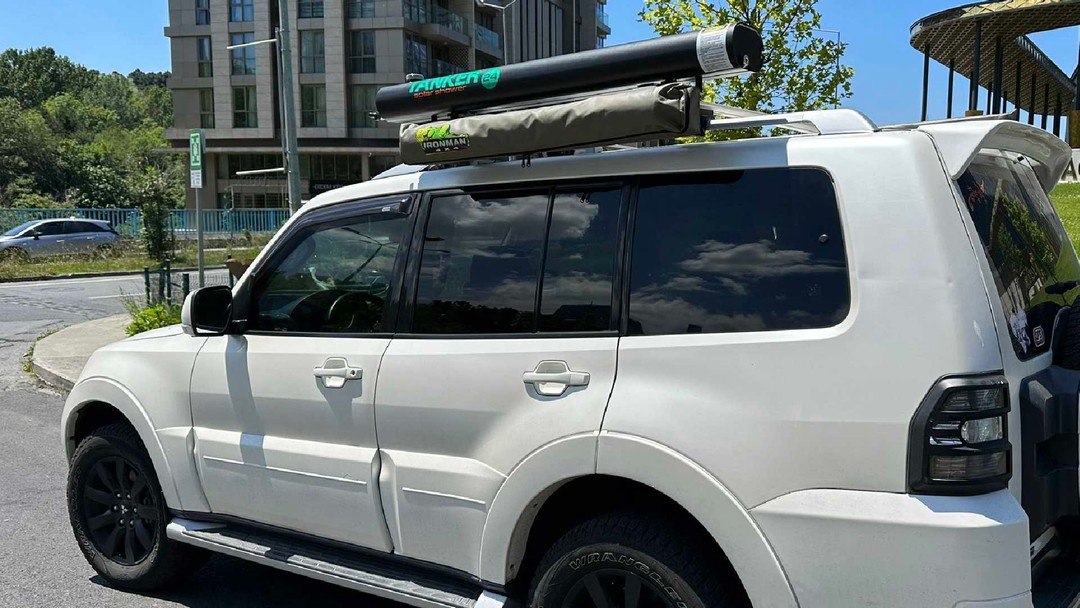On-board water tanks are the perfect solution for outdoor enthusiasts and long-distance travelers to meet their hot water needs. At Tanker Solar Shower, we have prepared this guide to examine the important factors you need to consider when choosing the right on-board water tank and to help you determine the one that suits you best. You will be able to learn everything from capacity to the material it is made of, from working logic to ease of installation and transportation, from spare parts to accessories.
Pay Attention to Capacity
When choosing an on-board water tank, you should consider the water capacity. How often do you plan to shower? Will you be using it for a family or a single person? Answering these questions will help you determine the right capacity.
As Tanker Solar Shower, we provide services according to the customer's purpose with our on-vehicle pressurized water tanks bed and vertical, 35 lt and 24 lt options.

Material Quality Matters
The quality of the material from which on-vehicle water tanks are manufactured is critical for long-lasting use. Stainless steel or plastic is generally preferred. By controlling the material quality, you can ensure durability and keep the water clean.
Understand Operation Logic
On-board water tanks are water storage systems used to meet the need for portable water supply and for various purposes such as cleaning, cooking, showering while traveling. On-board water tanks come in two main types: pressurized water tanks and non-pressurized water tanks. Here is what both types are, the differences between them, their advantages and disadvantages:
Truck Mounted Pressurized Water Tank:
What It Does: Pressurized water tanks store and use water under high pressure. This is ideal for spraying water or providing a strong flow. They are especially used in processes such as car washing, surface cleaning or irrigation.
Advantages:
Provides high-pressure water, ensuring effective cleaning and washing.
Easy to use spray gun or hose.
It is possible to adjust the water flow rate.
Disadvantages:
Pressurized water tanks usually have a more complex structure, so they can be more difficult to install and maintain.
Water consumption can be higher.
Vehicle Mounted Unpressurized Water Tank:
What It Does: Non-pressurized water tanks do not store water in a pressurized way. The water flows by gravity and therefore they provide a lower water pressure. They are generally preferred for showering or kitchen use.
Advantages:
Non-pressurized water tanks have a simpler design, so installation and maintenance are easier.
Easy Assembly and Transportation
How easy is it to install and transport your onboard water tank? The installation of on-board pressurized water tanks is a process that needs to be carried out carefully. Here are the general steps for installing truck mounted pressurized water tanks:
Choosing the Right Location:
The first step is to choose a suitable location to mount the water tank on your vehicle. Usually, this can be the roof of your vehicle or the trunk area. Taking into account the weight and size of the tank, you should choose a mounting point that suits the structural strength of your vehicle.
Preparing the Mounting Brackets:
Prepare the mounting brackets you will use to secure your water tank. Mounting brackets are the frames that will carry and secure the tank securely. You can prepare these brackets using metal or aluminum sheets cut to the appropriate dimensions for your vehicle.
Fixing the Tank:
Secure the mounting brackets to your vehicle. This step involves securely mounting the brackets to the roof or trunk area of your vehicle. Fasten the brackets securely with bolts or suitable fastening materials.
Installing the Tank:
Secure the water tank to the mounting brackets. Screw or connect the tank to the brackets using the mounting points on the bottom or side of the tank. Make sure the tank is securely fastened.
Water Connections:
You will need to make inlet and outlet connections to your water tank. You can usually make these connections using a water hose or pipe. Connect the outlet connection of the water tank to your desired water source (for example, a shower head or faucet).
Pressurization System:
Pressurized water tanks may require a pressurization system to operate. This system will pump water into the tank and create pressure. Pressurization system installation may vary depending on the specifications and brand of the tank. Follow the manufacturer's instructions carefully.
Testing and Adjustment:
When installation is complete, test the system. Make sure that the tank distributes water pressurized and that the connections are not leaking. Adjust pressure levels if necessary.
The installation process may vary according to brand and model differences, so be sure to review the water tank's user manual and follow the manufacturer's recommendations. Also, remember to take appropriate safety precautions to ensure safe installation.
Tanker Solar Shower, a vehicle mounted pressurized water tank, makes your use much more enjoyable with a practical mounting system and ease of transportation. You can install it yourself skillfully and easily without the need for a professional team.
Spare Parts and Accessories
Spare parts and accessories for on-board water tanks are also important. Being able to easily get spare parts in case something breaks down or customize your shower experience is a big advantage. So take a look at the spare parts and accessories options. You can find the product you have purchased and the materials and spare parts you need on Tanker Solar Shower's website.
Choosing the right on-board water tank can make your journeys more comfortable and enjoyable. You can find the most suitable option by considering factors such as capacity, material, operating logic, ease of installation and transportation, spare parts and accessories.